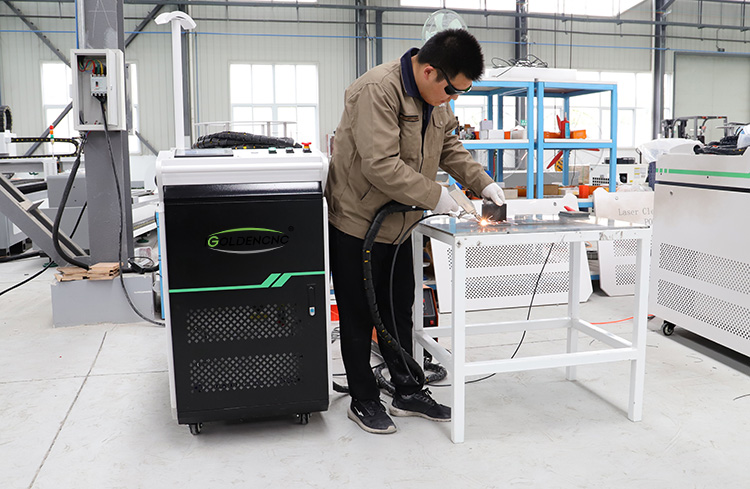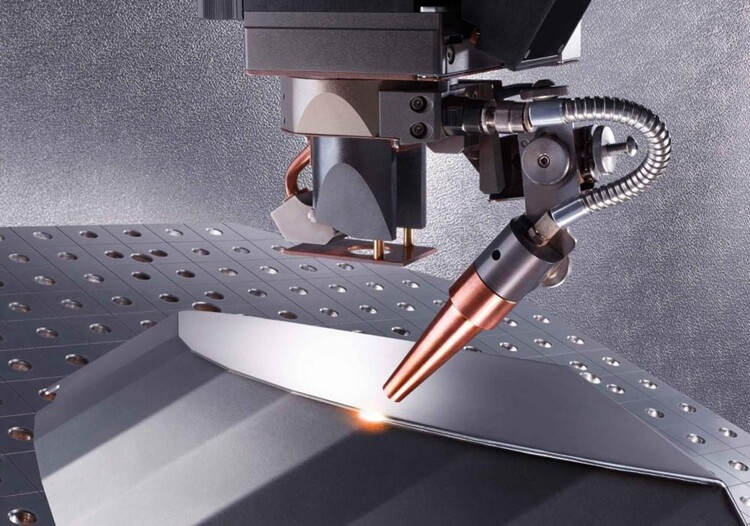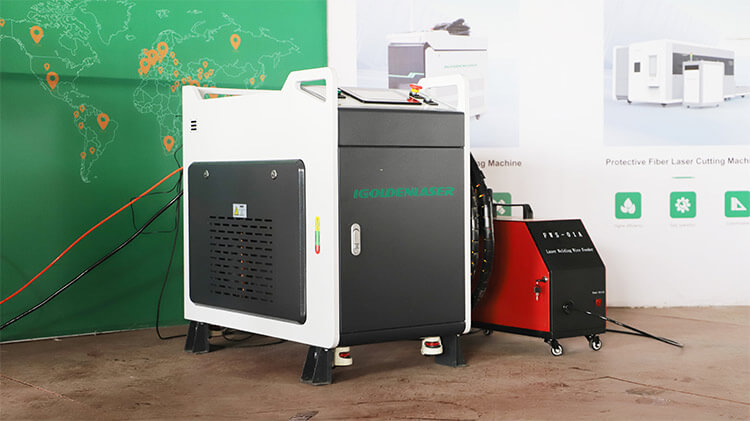Laser Knowledge
Laser Welding Machine in Copper Welding: A Comprehensive Overview
Laser Welding Copper
Fiber lasers have a high energy density, which helps to overcome the high – reflectivity problem of copper to some extent. They can provide a more concentrated heat source, allowing for better control of the welding process. The flexibility of fiber – optic delivery also enables the welding of complex – shaped copper parts. Additionally, fiber lasers have a relatively high – speed welding capability and can produce high – quality welds with minimal distortion.
Fiber lasers use a fiber – optic cable to deliver the laser beam. The beam is generated by a doped fiber that is pumped with light from a diode. For copper welding, fiber lasers are highly effective because they can operate at wavelengths (usually around 1064 – 1080 nm) that are more absorptive for copper. The laser energy is focused onto the copper surface, melting and fusing the material.
Copper is a highly reflective material, copper welding has been a very difficult technical problem to overcome, but in the copper products related processing industry in the welding of copper parts, not only to ensure the firmness of the weld, but also to ensure that the appearance of the weld will not affect the appearance. This is due to the cognition of welding equipment before welding. At present, what can meet the requirements in china is the composite 2kw fiber laser welder. The laser source of the composite laser welding machine is the combination of fiber continuous laser and semiconductor continuous laser source. Then choose the corresponding data according to the different quality of copper material, adjust the welding temperature, Angle, light wave and so on, so that the data can reach a stable value, in order to ensure that there will be no problems in the welding process, to ensure the welding quality. The application of 2kw laser welder in copper welding is introduced below.

Challenges of Copper Welding
High Reflectivity
Copper has a high reflectivity to laser light, especially in the visible and near – infrared spectrum. This means that a significant portion of the laser energy can be reflected away from the surface, reducing the efficiency of the welding process. For example, in the case of traditional lasers like CO₂ lasers, the high reflectivity of copper can lead to poor energy absorption and incomplete welding.
High Thermal Conductivity
Copper’s high thermal conductivity causes rapid heat dissipation. As a result, it’s difficult to achieve the required heat concentration for effective welding. The heat quickly spreads away from the welding zone, making it challenging to melt and fuse the copper properly. This can lead to weak welds or the need for extremely high – power laser settings to overcome the heat loss.
Oxidation
Copper is prone to oxidation, especially when exposed to high – temperature environments during welding. The formation of copper oxides on the surface can affect the quality of the weld. Oxides can act as barriers to the proper fusion of the copper, resulting in porosity or reduced mechanical strength of the welded joint.
Applications
Commonly used in the electronics industry for welding copper wires and components. In the automotive industry, they are used for welding copper parts in electric vehicle battery systems and electrical connections.
Electronics Industry
In the electronics industry, laser – welded copper connections are used in printed circuit boards (PCBs), integrated circuits (ICs), and electronic components. The precision of laser welding allows for the connection of fine – copper wires and the formation of reliable electrical contacts. For example, in the production of high – density PCBs, laser welding is used to connect micro – vias and fine – pitch components.
Automotive Industry
The automotive industry uses copper laser welding for various applications. In electric vehicles, copper is a key material for battery connections, motor windings, and power electronics. Laser welding provides a high – quality and efficient way to join copper components, ensuring reliable electrical conductivity and mechanical stability. For example, in the manufacturing of battery packs, copper busbars are laser – welded to connect the battery cells.
Renewable Energy Industry
In the renewable energy sector, copper laser welding is used in the production of solar panels and wind turbines. Copper is used for electrical connections in solar cells and for conducting electricity in the generators of wind turbines. Laser welding ensures the efficient and reliable transfer of electricity and helps to improve the overall performance and durability of these renewable energy systems.

Compared with traditional welding, laser welding has the following advantages:
1. In the traditional welding method, the heating surface is relatively large, and the welding part is easily deformed due to the effect of heat, and the welding surface is not flat enough. The heating surface of copper laser welding is very small, because the size of the welding spot can be automatically adjusted. And the maximum temperature can be controlled, so there will be no deformation caused by large heating surface or high temperature.
2. For copper laser welding, the high temperature emitted by the laser beam acts on the surface of the welded body without the need for contact with the appliance. This can reduce the loss of parts and components, thereby reducing the investment, and it will not produce electrode pollution.
3. The diameter of the laser beam is adjustable, even if the welding surface is very small, it can also be very good welding. And adapt to the material is also very much, the application range is very wide. At the same time, it can avoid the interference of magnetic field, because it is not like arc welding, etc., with the interference of magnetic field can not complete the task well. Even welding between different metals can be done by laser welding. Laser welding of copper is simple, accurate and adaptable.



IGOLDEN BLOG
Thank you for visiting the iGOLDENCNC website. iGOLDENCNC is the professional supplier of CNC machinery application solution, within the business of producing and selling CNC machinery and accessories.